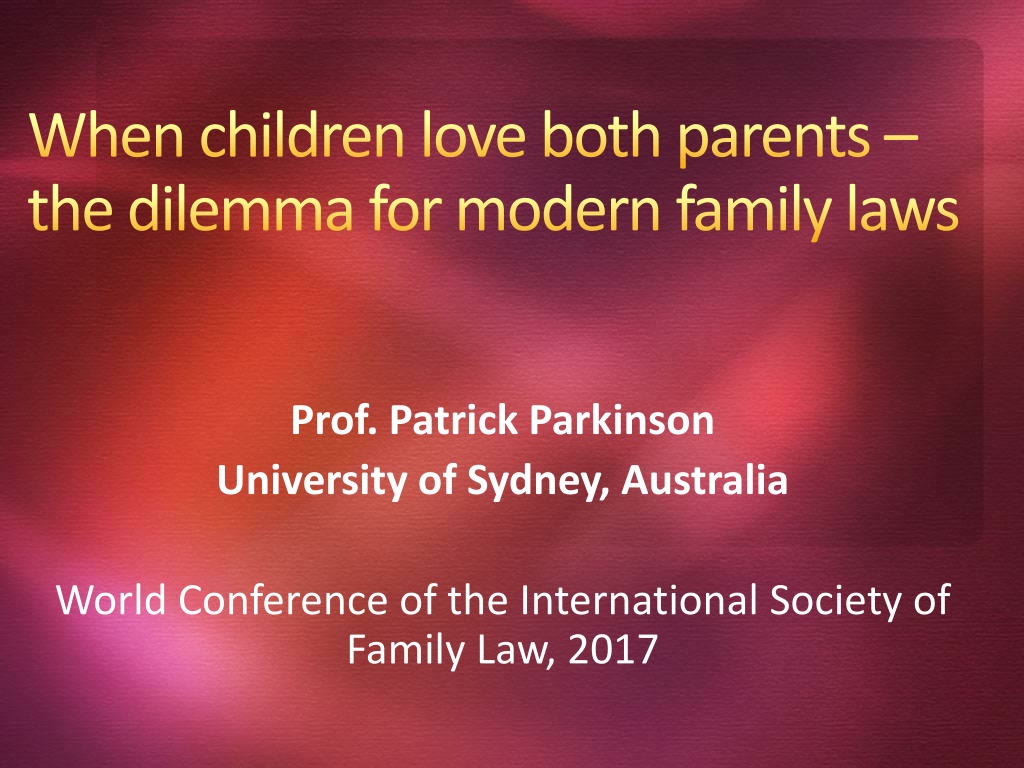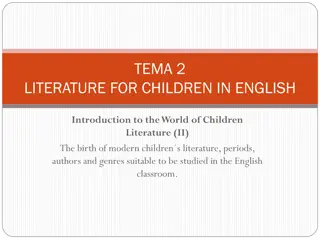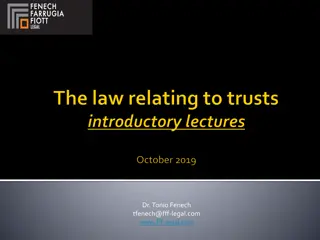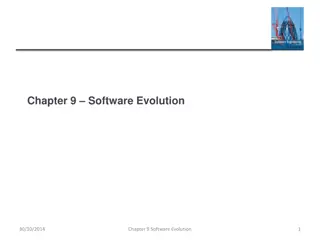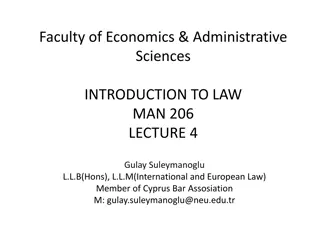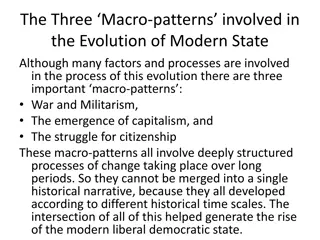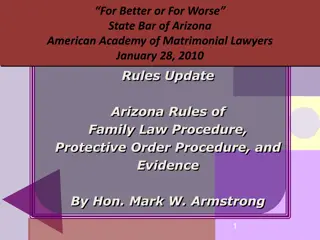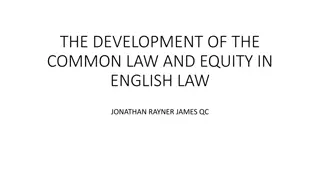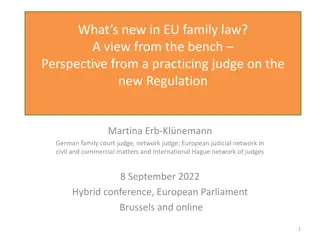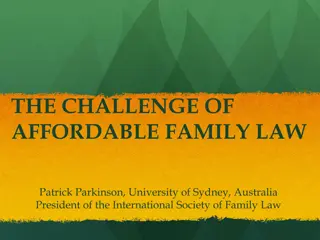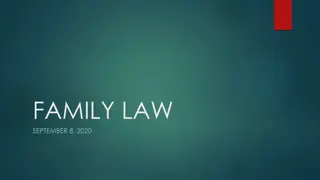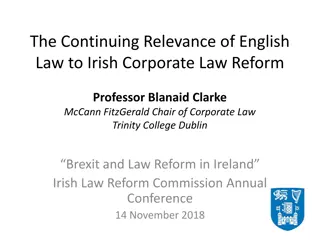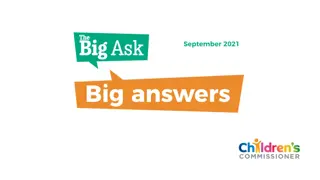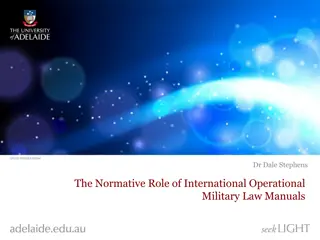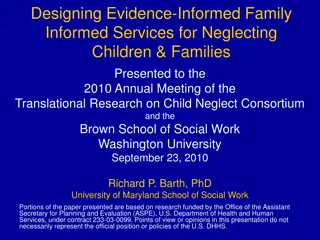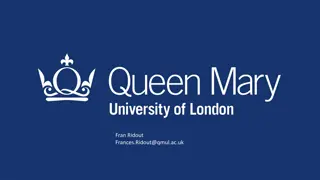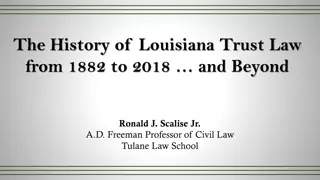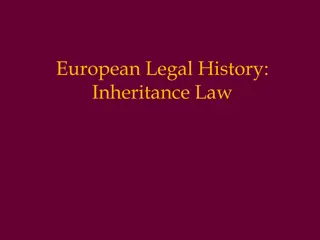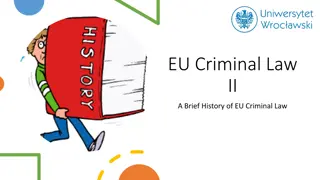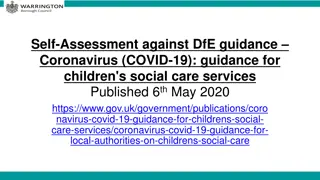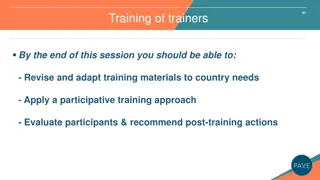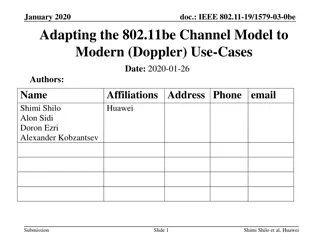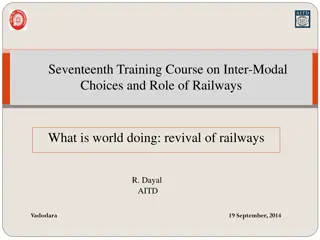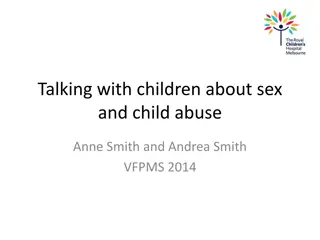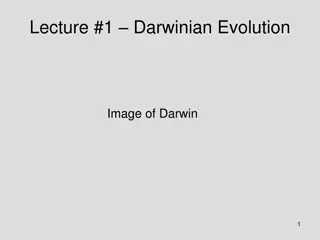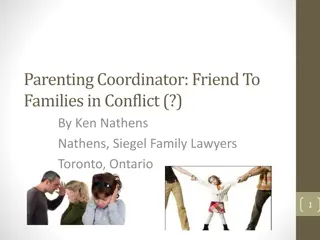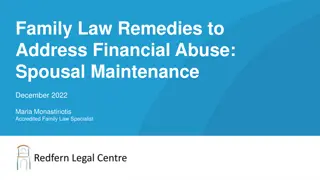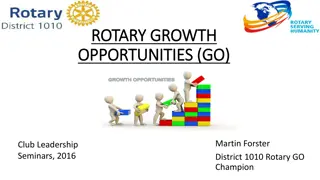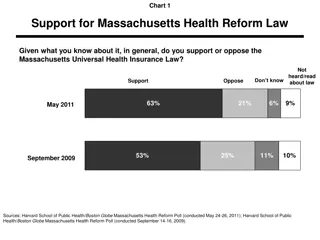Evolution of Family Law: Adapting to the Needs of Children in Modern Times
Over the past 40 years, family law has undergone significant changes worldwide to better cater to children's needs post-divorce. Two major divorce revolutions have shaped this evolution, emphasizing the importance of balancing parental involvement with child protection. The shift from a focus on autonomy to connectedness through the children reflects a modern dilemma of reconciling divorce with children's best interests.
Download Presentation

Please find below an Image/Link to download the presentation.
The content on the website is provided AS IS for your information and personal use only. It may not be sold, licensed, or shared on other websites without obtaining consent from the author. Download presentation by click this link. If you encounter any issues during the download, it is possible that the publisher has removed the file from their server.
E N D
Presentation Transcript
When children love both parents the dilemma for modern family laws Prof. Patrick Parkinson University of Sydney, Australia World Conference of the International Society of Family Law, 2017
40 years of change Oxford, Baroness Deech and English family law 40 years ago Much has changed in family law worldwide Changes in the very meaning of divorce that have had profound impacts upon family law with which many have not yet come to terms Necessitated by a better understanding of children s needs in the aftermath of separation Creates a modern dilemma how to reconcile divorce with the needs of many children
The first divorce revolution (1970s) The promise of autonomy Custody once an either/or choice between two parents Divorce dissolves the family as well as the marriage (Braiman v Braiman 378 NE 2d 1019 at 1022 (1978)) Choice between two alternative households Reasonable access/visitation was the wooden spoon Child support and maintenance obligations limited in practice
Kirby J on autonomy One of the objects of modern family law statutes is to enable parties to a broken relationship to start a new life for themselves, to control their own future destinies and, where desired, to form new relationships, free from unnecessary interference from a former spouse or partner or from a court. (Kirby J in AMS v AIF, High Court of Australia, 1999)
The second divorce revolution: The demand for connectedness through the children The indissolubility of parenthood Today, divorce is not the end of a relationship but a restructuring of a continuing relationship. (Margo Melli) Now a strong emphasis on the involvement of both parents as long as it is safe. E.g Australia objective is to ensure that children have the benefit of both of their parents having a meaningful involvement in their lives, to the maximum extent consistent with the best interests of the child. Balanced by need to protect child from harm Reinforced by strong child support laws
Characteristics of the Second Divorce Revolution
The demise of sole custody The joint legal custody movement (USA) Joint parental responsibility as the default position The Children Act (England and Wales) The principle of coparentalit (France) - joint parental authority Gesetz zur Reform des Kindschaftrechtes, 1997 (Germany) Australia (1995) Principle is that divorce does not change the responsibilities of parents
Laws which are premised on proximity Joint physical custody Laws encouraging shared care e.g. France, Belgium, Australia, various US states (e.g. Arizona) Shared care requires proximity The dilemmas of shared care The constraint upon autonomy The cost of two homes The centrifugal effects of separation
The rigorous enforcement of child support obligations Sen. Daniel Moynihan: hunt, hound and harass deadbeat dads. Statutory formulae or guidelines percentage of obligor income or sharing of income Enforcement through salary deductions and other methods. Reinforces the sense for men that paternity involves continuing and significant commitment that survives the break-up of the parent-parent relationship.
Understanding the Second Divorce Revolution
The gender war story Main explanation is political Changes in law seen in terms of winners and losers The impact of fathers rights groups Politicians and judges don t understand domestic violence Undoubtedly part of the story but: Fails to recognise the importance to fathers of their bond with their children Fails to recognise the importance to children of their connection to their fathers
Limited support for the old model of custody Serious ongoing conflict between the parents after separation is likely to be harmful Children who grow up in domestic war zones The effects of witnessing domestic violence But we need to recognise the heterogeneity of domestic violence Coercive-controlling violence Violence driven by conflict Separation-engendered violence
Understanding childrens needs Most children in two-parent families form psychologically important and distinctive relationships with both of their parents, even though one may be a primary caretaker. mothers and fathers each make unique contributions to their children s development and individuality... Time distribution arrangements that ensure the involvement of both parents in important aspects of their children s everyday lives and routines including bedtime and waking rituals, transitions to and from school, extracurricular and recreational activities are likely to keep nonresidential parents playing psychologically important and central roles in the lives of their children. (Lamb, Sternberg & Thompson, 1997) But more frequent contact with the non-resident parent does not, in itself lead to improved wellbeing for the children of divorce (Amato and Gilbreth, 1999)
Childrens views and perspectives Research on what children and young people say from their own experience has fortified the case for rethinking the law of parenting after separation E.g Australian and NZ studies showing half of the children and young people wanted more time with the non-resident parent E.g. Laumann-Billings and Emery found that young adults who lived in sole custody arrangements expressed more feelings of loss, and more often viewed their lives through the lens of divorce, compared to those young adults who grew up in more shared physical custody arrangements.
The old promise of divorce The old model of sole custody is best for some children with a parent who is unable or unwilling to make a positive contribution to their wellbeing However, it is inconsistent with the emotional needs of many children, perhaps most. Inconsistent with their financial needs also (and beyond 18) But genuine countervailing factors which make it a dilemma (e.g. relocation)
How do we reconcile the needs of children with the needs of their primary caregiver? Can we even acknowledge the question? Assumption that there is no dichotomy between children s rights and the primary caregiver s Happy mother, happy child Acknowledging the dilemma Having the courage to be evidence-informed and child-focused
Gummowand CallinanJJ on the indissolubility of parenthood The reality is that maternity and paternity always have an impact upon the wishes and mobility of parents: obligations both legal and moral, the latter sometimes lasting a lifetime, restrictive of personal choice and movement have been incurred. (U v U (2002) High Court of Australia)
